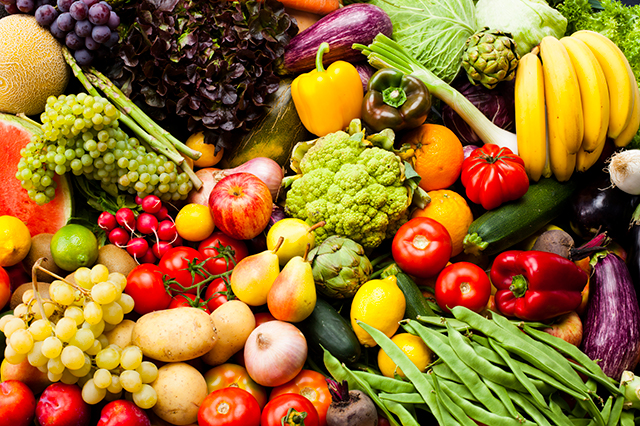Winters are not quite what they used to be – in that we don’t often feel those crisp cold and frosty winter mornings and nor do we cosy up by the fire on a Sunday afternoon to keep out of the cold. Because of global warming, we now see huge downfalls of snow at the beginning of spring and the opposite side of that coin is a brilliantly sunny day in the middle of November. Seasons just don’t feel the same anymore and as it relates to food we are now able to purchase any food we desire throughout the year.
Personally, I believe very much in ‘seasonal’ fare, and by that I mean, eating foods that are ‘in season’ because they were planted and harvested at a certain time. There’s nothing like the smell of freshly picked strawberries in June and autumn raspberries in September, and once the summer months really draw to a close, the mists in the valleys rise, followed by rain and a nice cool autumn breeze carrying with it that lovely earthy smell of the mushroom crop as they appear above the soil in the woodlands. Nature at its very best! But I digress…in a nut shell, it’s a wonderfully healthy plate of food in front of you if the food is seasonal, from the country you live in and if it contains a large enough variety of freshly cooked vegetables. As we are all aware, the 5-a-day message is out there, but unfortunately, on average, most people in the UK are only eating 2.5 a day.
We really need to obtain a good intake of vegetables if we are to stay healthy through the gloomy winter months. Take the mushroom for example; it’s the only natural fresh vegetable (some call it a fruit) that contains vitamin D, which many young women in the UK do not get enough of. It also comes with an abundance of selenium (a mineral) that works as an antioxidant to protect body cells from free radical damage. Vegetarians don’t have high intakes of selenium in their diet, so mushrooms are a great help in that direction. The mushroom season is short, but catch it if you can.
There is a shift towards growing your own food, and it is important for sustainability, but I’m not trying to entice anyone to ‘dig for victory’ here, I’m simply making the point that a healthy winter diet needs a little bit of thought. For example, there is nothing like a piping hot bowl of winter vegetable stew based on locally grown produce, home baked bread, followed up by a berry pie (only the top is made of pastry though). All of the ingredients can be seasonal and if some are not, a frozen bag of freshly harvested vegetables or fruit will do just fine (See my vegetable soup recipe).
Why are these foods hearty and healthy? Well firstly because they will contain an abundance of fruit and vegetables which provide health giving antioxidants known to ward off winter colds as well as the winter blues I might add! Also, a good old fashioned vegetable stew can be enhanced and made into a meat or a fish stew which in turn will give us our necessary essential fatty acids (Omega 3’s), another important fat that we are not getting enough of in the UK. This of course constitutes a ‘balanced diet’ and will stand us in good stead long term as it relates to heart disease, cancer, diabetes and obesity. Easy! Well, not for everyone. The problem with the simple winter stew and fruit pie is that you need to know how to cook it – or more to the point, how not to over-cook it.
There are many recipes around for stews and pies, but the best clue to success is to only cook the food for 20 – 30 minutes, then leave the pot on top of the stove with the lid on, no longer heating it and just wait for all those flavours to mix together and all those juices to blend. This is where the taste comes from and this is where a good mix of vegetables will serve you well in health. The protective effects of antioxidants in the vegetable stew are well known to defend against cancers and the essential fatty acids (omega 3 & 6) from animal protein and oily fish defend against heart disease. Adding fish (and lean meats) to stews and soups is also a good way of getting your children to eat fish when they otherwise resist it. Two portions of fish each week is a good plan and one of those portions should be oily fish such as salmon or mackerel. Also, the fibre and iron content here is quite high and health giving towards the fight against cancer. Another idea is to roast vegetables and serve with fish. Cut up root vegetables such as sweet potatoes, turnips, parsnips into long chunky pieces and roast for 30 minutes (check after 30 minutes anyway). Drizzle with olive oil and serve.
All of these ideas for winter healthy dishes come with an abundance of vitamin C and other important health aids such as beta-carotene. According to research, beta-carotene found in yellow fruits and vegetables such as sweet potato, carrots, and also in green vegetables like kale and spinach have high levels of antioxidant activity. The winter fruit pie could be anything from raspberry and apple, or raspberry and rhubarb, and of course in September, there is nothing nicer than a blackberry pie made from new freshly gathered berries; again high in antioxidants – warding off colds, and moreover very protective against cancer.
Time





